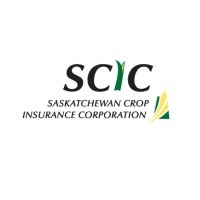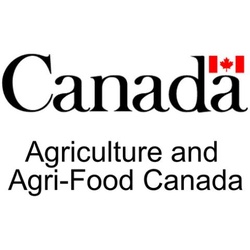
AgriStability — Saskatchewan
At a glance
- No Condition
- Closing date : June 30, 2025
- Agriculture, forestry, fishing and hunting
- Saskatchewan
- For-profit business
- Sole proprietorship
- All revenue ranges
- All organization sizes
- Rural or Northern Residents
Overview
Get financial support to help manage large income declines caused by production loss, increased costs or market conditions.
Activities funded
Eligibility
Eligibility for the AgriStability program is determined by specific criteria related to the applicant's farming activities and financial standing.
- The applicant must operate a farm in Saskatchewan, Canada.
- The applicant's farm must demonstrate large margin declines due to production loss, increased costs, or adverse market conditions.
- The eligibility is personalized using the applicant's historical income tax information and supplementary data.
- Applicants must enrol in the program by contacting the SCIC AgriStability Call Centre and requesting a participant package by the enrolment/fee deadline for the program year they wish to participate in.
Who is eligible?
This program specifically targets farm operations in Saskatchewan seeking support for managing risks associated with significant margin declines due to production loss, increased costs, or market conditions. It is designed to benefit those who rely on agricultural income.
- Farm operations with historical data demonstrating agricultural income.
- Participants who have the necessary income tax and supplementary historical information to determine personalized coverage.
Eligible expenses
Yes, there are eligible expenses for this grant.
- Agricultural commodity purchases
- AgriInsurance premiums
- Commissions and levies (related to commodity sales)
- Commodity future losses/transaction fees
- Containers and twine
- Custom feeding*
- Electricity
- Fertilizer and lime
- Freight and shipping (to and from market)
- Heating fuel
- Machinery (gasoline, diesel fuel, oil)
- Minerals and Salts
- Other insurance/premiums for allowable income and expense items
- Pesticides
- Point of sale adjustments
- Prepared feed
- Salaries (arms length as defined by CRA)
- Storage/drying
- Veterinary fees, medicine, breeding fees
Eligible geographic areas
This program is primarily designed for farm operations and producers within Saskatchewan. As a provincial initiative, it targets agricultural stakeholders located in this region to enhance risk management specific to local conditions and challenges.
- Farm and agricultural operations based in Saskatchewan, Canada.
How to apply
Enroll in AgriStability
- Contact the SCIC AgriStability Call Centre.
- Request a new participant package by the Enrolment/Fee Deadline of the program year in which you wish to participate.
Prepare Necessary Information
- Gather historical information related to your farm operation based on income tax and supplementary information.
- Ensure your tax information is accurate and up to date.
Complete AgriStability Program Forms
- Fill out the required program forms accurately.
- Include all necessary details pertaining to your farm's margins, benefits, and incurred costs.
Submit Application
- Submit the completed forms to SCIC by the program deadline.
- Ensure submission is completed by September 30, 2024, for the 2023 program year to avoid penalties.
Confirmation
- Receive confirmation from SCIC regarding the receipt of your application.
- Keep the confirmation for your records.
Additional information
AgriStability provides personalized coverage based on individual farm operations' historical information, aiming to support those facing significant margin declines. Structural changes, combining operations, and participation in other related programs can impact benefit calculations and eligibility.
- Participants need to report income from agricultural commodities and must farm in Canada for at least six consecutive months in the program year.
- Deadline for submitting forms without penalty will change to June 30, 2025, starting from the 2024 program year.
- Participating entities must submit income and expense information directly to SCIC, either through AgConnect or specific forms.
- AgriStability adjusts program margins using supplemental information to provide an accurate financial view of the farming operation.
- Allowable income includes agricultural commodity sales, crop insurance proceeds, and CFIA payments, among others.
- Allowable expenses cover agricultural purchases, insurance premiums, and machinery fuel costs, among others.
- Structural changes in farm operations are considered for accurate benefit calculation.
- Operations are combined if they are not legally, financially, or operationally independent.
- Non-participation in Crop Insurance can lead to benefit reductions under specific circumstances.
- Additional information must be provided within the required time frame upon SCIC's request.
- Amendments to benefit calculations can be submitted within 18 months from the date of the original Calculation of Benefits.
- Appeals must be submitted within 90 days of the decision notification and can be reviewed by an independent Provincial Appeal Panel.
Contacts
Frequently Asked Questions about the AgriStability — Saskatchewan Program
What is the AgriStability — Saskatchewan?
How much funding can be received?
What expenses are eligible under AgriStability — Saskatchewan?
What is the deadline to apply?
Is the AgriStability — Saskatchewan a grant, loan, or tax credit?
Who are the financial supporters of the AgriStability — Saskatchewan?
Who is eligible for the AgriStability — Saskatchewan program?
Who can I contact for more information about the AgriStability — Saskatchewan?
Where is the AgriStability — Saskatchewan available?
More programs like this

Youth Employment and Skills Program
Agriculture and Agri-Food Canada (AAFC)
NRC — Plant growth research facilities
National Research Council Canada (NRC)
Irrigation Program — Irrigation Efficiency Program
Government of Saskatchewan
FRWIP — Small Dams
Government of Saskatchewan
FRWIP — Water Development Projects
Government of Saskatchewan
Agriculture Awareness Initiative Program (AAIP)
Government of Saskatchewan
Farm and Ranch Water Infrastructure Program (FRWIP) — Well Decommissioning and Special Projects Pre-Approval
Government of Saskatchewan
Saskatchewan Product Development Program (PDP)
Saskatchewan Food Industry Development Centre
Agtech Growth Fund
Government of Saskatchewan